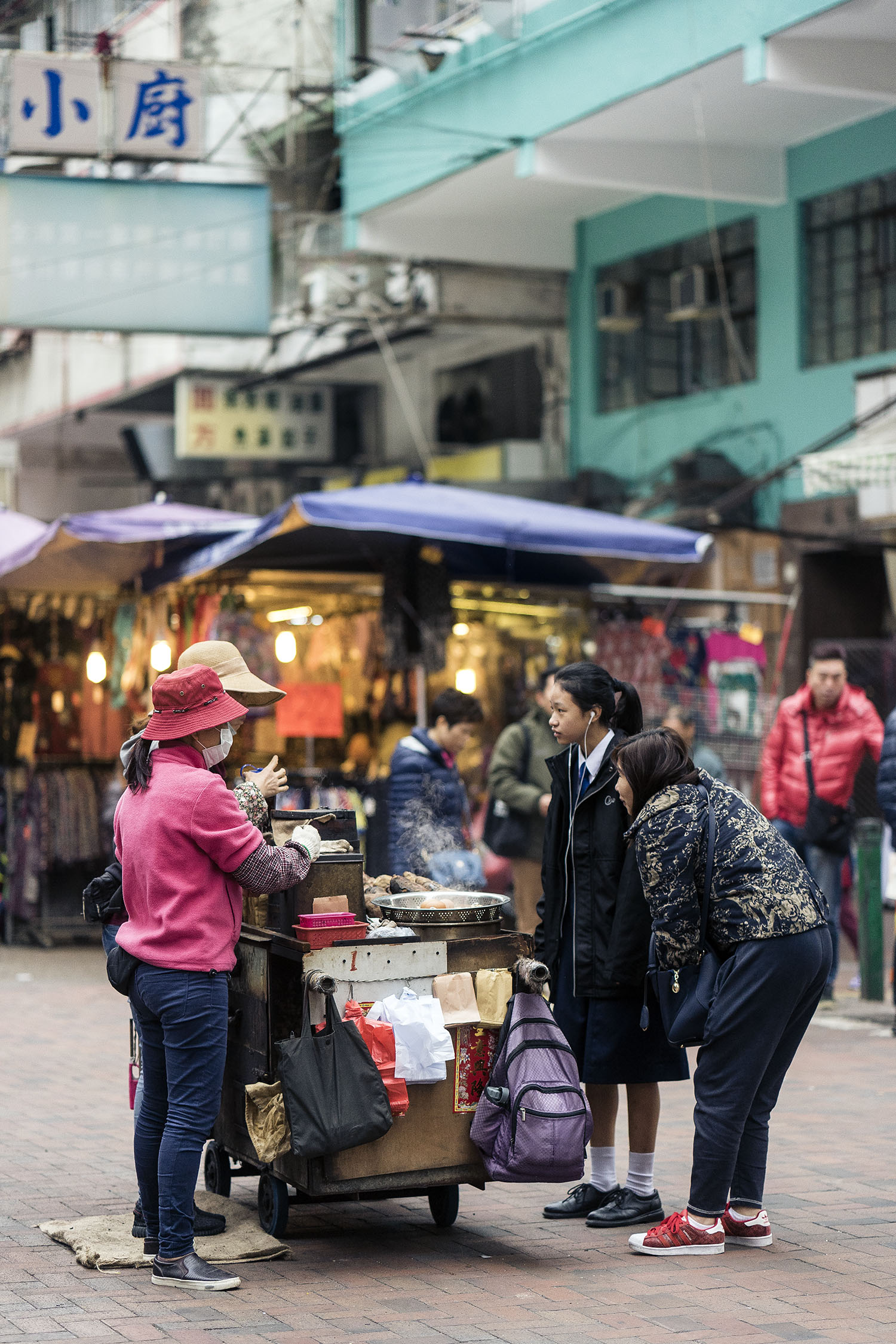SHAM SHUI PO
In Hong Kong, space is a luxury. Our hotel room was the exact dimensions of just our bed, train trips get you up close and personal with strangers and busy restaurants have you sharing your table with other diners as a general rule. Hong Kong is busy and it’s crowded, but that’s what makes it fun.
In Sham Shui Po, one of Hong Kong’s oldest neighbourhoods, the dense population has been growing since the 1950s. Back then public housing estates were built all over the place and whole apartments were fit into rooms of just 20-30 square metres (and still exist). With a population of more than 400,000 crammed in an area of 10 square kilometres (for reference, that’s about the same population as Canberra, but Canberra has an area of 814 square kilometres), Sham Shui Po not only has become a residential hub but also a buzzing marketplace. Electronic stores, computer malls, toy stalls and wholesale fabric shops fill the streets.
But we came here for the food. Our guide for the day, Michael, walked us past fresh sugarcane juice merchants, snake blood soup shops and the silkiest tofu. He took us to a Michelin-listed pudding shop (more on that next week), walked us through a local indoor market and gave us the low-down on traditional cha chaan teng, Hong Kong’s famous coffee shops.
Cha chaan teng can only be described as local’s cuisine. For foodie tourists, lining up for 30 minutes, getting squashed onto a table with a whole other family, eye-rolled by the sassy waiters and tucking into a sloppy ham and macaroni soup is not going to be everyone’s cup of tea. To be honest, it wasn’t mine. But the culture was fascinating. What’s with the menu? Why is everyone cutting their French toast into squares? Is this even French toast?
Michael showed us into the Pei Ho indoor market, a typical wet market with an upstairs cooked food centre that's open until two o'clock in the morning. We sat down at the sort-of cha chaan teng, ordered the traditional spread and Michael enlightened us with the story. “Cha chaan teng history started at the Peninsula hotel, where the British would have their tea,” he says. “At that time, the Chinese people were treated like dogs. They weren’t allowed to enter Western restaurants.”
Despite this cruel discrimination, the Chinese were enamoured with the British way of life, and wanted to mimic their eating habits. Standing on little wooden stools, they would peek through the windows of the Peninsula Hotel and observe the tea and dining rituals. They brought back what they learned to their own small shops, fitting them with 'fancy' décor of the era, serving milky tea and black tea with slices of lemon and even found a stock of coffee to produce similar cups to what the British were drinking. This became the original cha chaan teng menu: just tea, coffee and toasted bread with butter.
Next came French toast. “This is a very sad story,” says Michael. “Chinese people wanted to improve their lives, they wanted to have the steaks that the British were eating, but there was no steak available for them,” he says. “They would dip the bread in egg, deep-fry it and it would become a dark golden colour – it looked like steak.” Just like the British cut up their steak into small pieces, the Chinese did the same with their French toast and imagined it was a juicy piece of meat. “The French toast story is sad, but people really wanted to have a better life so they came up with a dish like this – they were very smart,” he says.
I tried googling this story but found no hits, so whether Michael’s toast-as-steak theory is a historic scoop or just another Chinese legend, it serves as another insight into the tough, unfair world of old Hong Kong, and how they always make the best of a bad situation.
Photography: Leigh Griffiths
Words: Eloise Basuki
All words and images are under copyright © 2019 strangertalk.co













